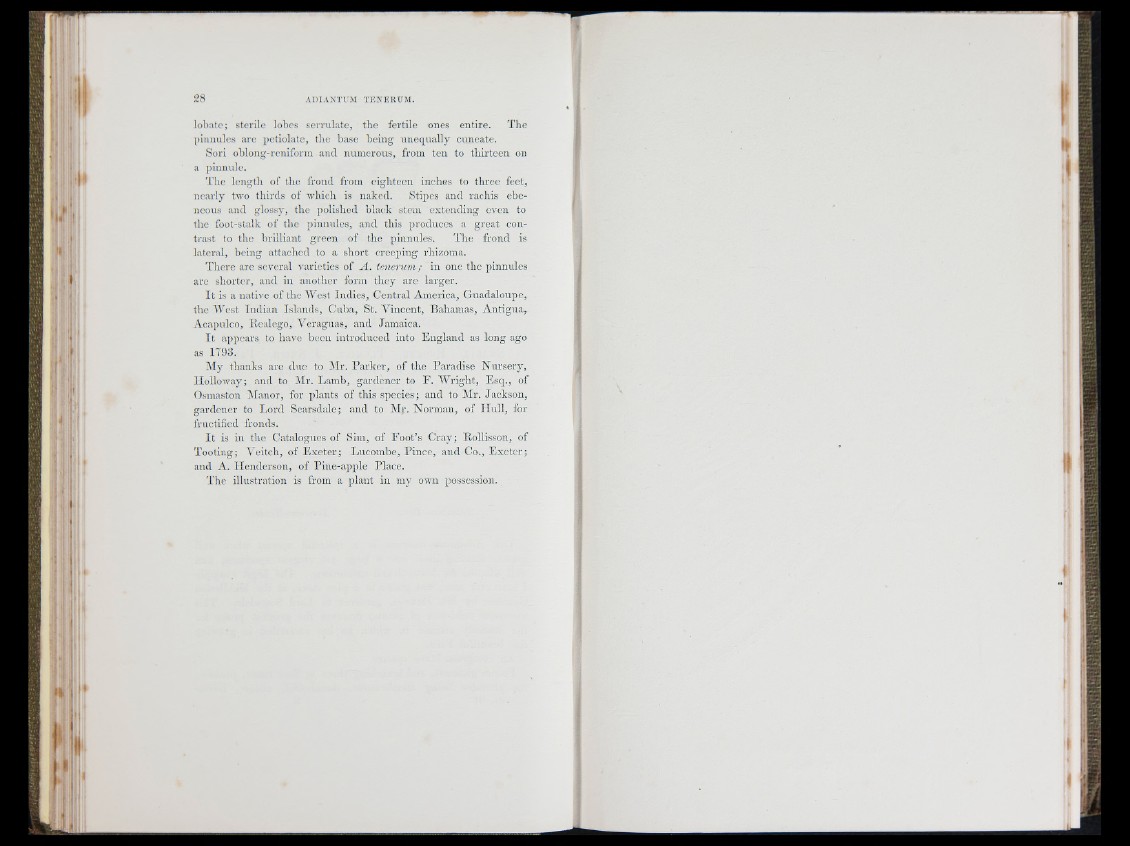
m . *
C ;i
28 A D IA X T V M T EX E R T JM .
loliate; sterile lobes se rrulate, tlxc fertile ones entire. The
jiinnulcs arc petiolatc, the ba.sc being u n equally cuncatc.
Sori oblong-reniform and numerous, from ten to thirte en on
a juiimde.
The length of the frond from eighteen inches to th re e feet,
nearly two thirds of which is naked. Stipes and rachis cbo-
ncous and glossy, the polished black stem extending even to
the foot-stalk of the pinnules, and this produces a great contrast
to the b rillian t green of the pinnules. T h e frond is
lateral, being attached to a short creeping rhizoma.
T h e re arc several A-arieties of A . tenerum; in one the pinnules
arc shorti'r, and in another form th ey arc larger.
I t is a native of the IVest In d ie s, Central America, Guadaloupo,
the W e s t In d ian Islands, Cuba, St. V incent, Bahamas, Antig u a ,
Acapulco, Rcalego, "V'craguus, and Jamaica.
I t appears to have been introduc ed into E n g la n d as long ago
as 17!)3.
IMy thanks arc due to Air. P a rk e r, of the Paradise N u rse ry ,
llolloAvay; and to Mr. Lamb, gardener to P . W r ig h t, E sq ., of
Osmaston Manor, for plants of this species; and to IMr. Jackson,
gardener to Im rd Scarsdale; and to IMr. Norman, of H u ll, for
fructified fronds.
I t is in the Catalogues of Sim, of F o o t’s C ray ; Eollisson, of
T ooting; Veitch, of E x e te r; Lucombc, Pinoc, and Co., F x c tc r ;
and A. Henderson, of Pine-apple Place.
'J'hc illustration is from a plan t in my OAvn possession.
ii